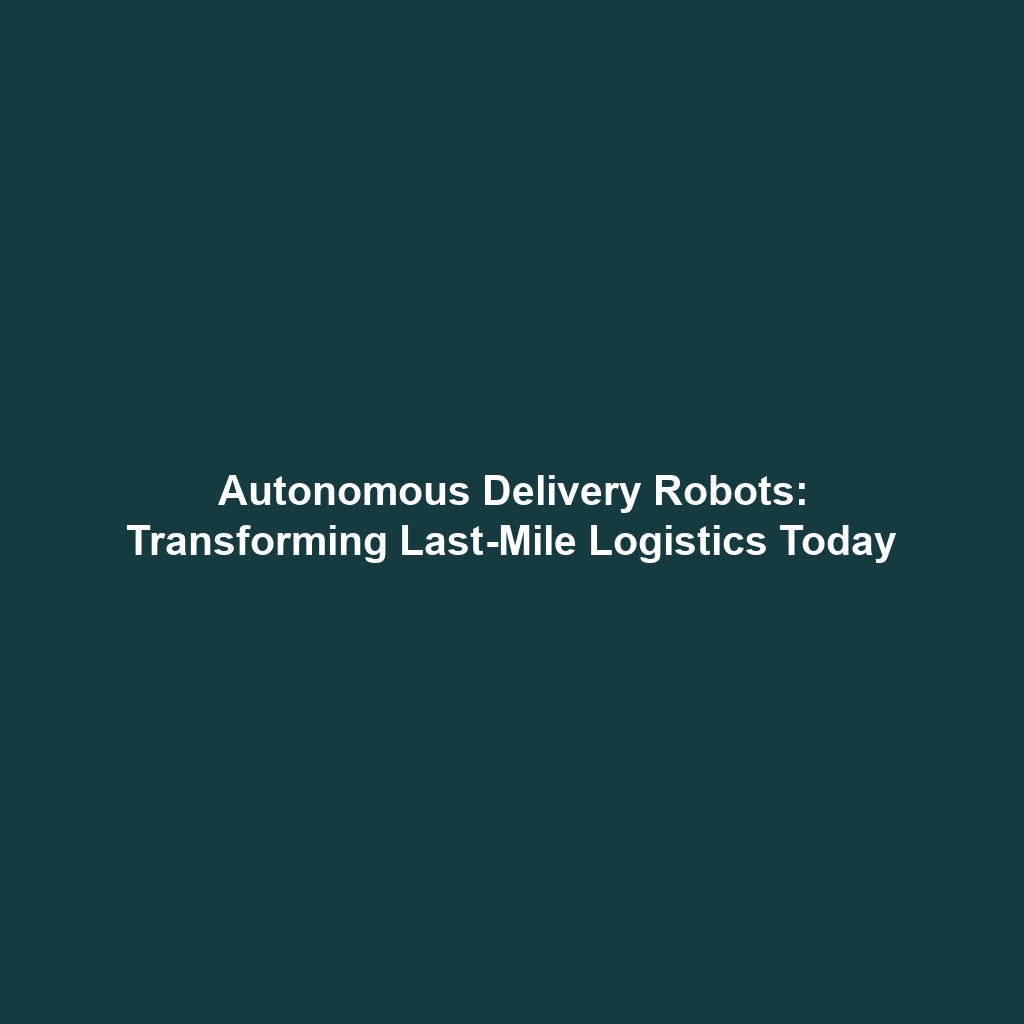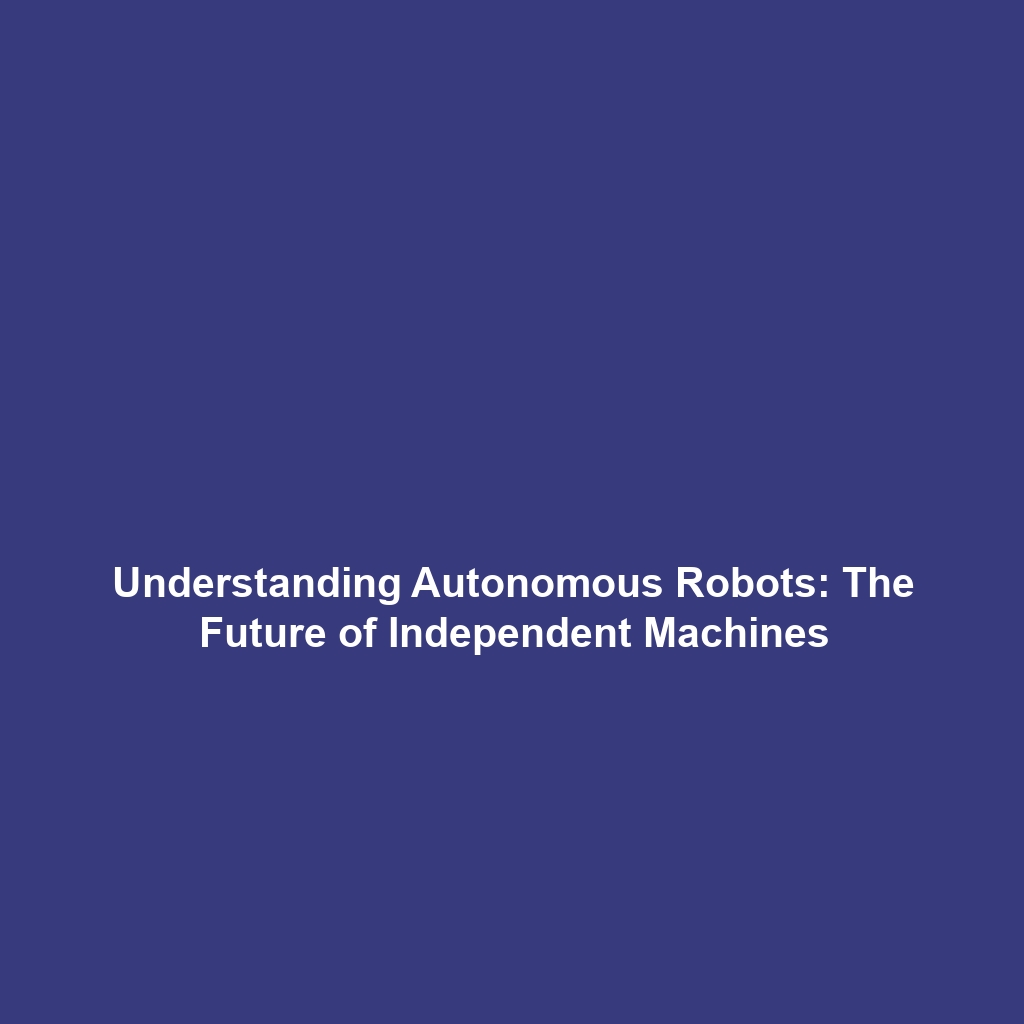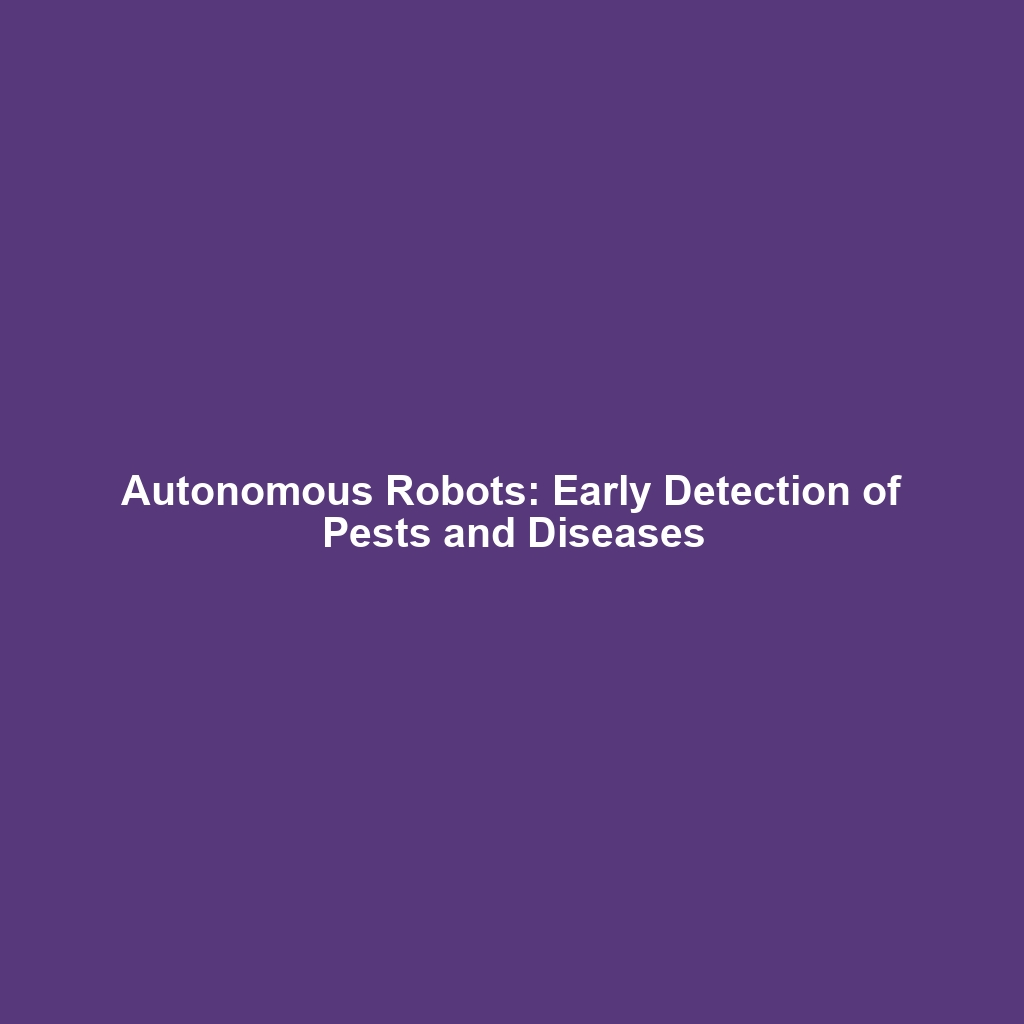Advances in Materials Science Creating Durable and Flexible Autonomous Robots
Introduction
The evolution of autonomous robots is dramatically influenced by advances in materials science. Innovations in this field are enabling the creation of more durable and flexible robots, which are essential for enhancing operational efficiency and performance in a variety of environments. As industries increasingly embrace robotic automation, understanding how materials science contributes to these developments is crucial. This article delves into the key concepts, applications, challenges, and future directions of materials science in the context of autonomous robots.
Key Concepts
Materials Science Principles
At the intersection of engineering and physics, materials science encompasses the study of the properties and applications of materials. Key concepts include:
- Composite Materials: Combining different materials to enhance strength and flexibility.
- Smart Materials: Materials that can adapt to environmental changes, improving robot functionality.
- Nano-coatings: Thin layers that protect against wear and tear, making robots more resilient.
These principles play a vital role in improving the structural integrity and flexibility of autonomous robots, ultimately making them more capable of performing tasks in dynamic environments.
Applications and Real-World Uses
The integration of advanced materials in autonomous robots influences numerous industries. Here are notable applications:
- Manufacturing: Robots utilize durable materials to operate in rigorous conditions, enhancing production efficiency.
- Agriculture: Flexible robots can navigate varied terrains, optimizing crop management and monitoring.
- Healthcare: Advanced materials allow robots to perform delicate surgical procedures with precision.
These examples showcase how advances in materials science contribute directly to enhancing the functionality and effectiveness of autonomous robots.
Current Challenges
Despite the remarkable progress, challenges remain in developing durable and flexible robots through advanced materials science. These include:
- Material Limitations: There are still constraints regarding the lifespan and performance of newly developed materials.
- Integration Issues: Difficulty in seamlessly integrating new materials with existing robotic systems.
- Cost Concerns: Advanced materials can be expensive, leading to higher production costs for robots.
Addressing these challenges is crucial for the continued advancement of autonomous robots.
Future Research and Innovations
Looking ahead, several exciting innovations in materials science are set to shape the future of autonomous robots:
- Biomimetic Materials: Inspired by nature, these materials promise to enhance adaptability and resilience.
- 3D Printing: Revolutionizing manufacturing processes, allowing for rapid prototyping of durable components.
- Self-healing Materials: Enhancing longevity by enabling robots to repair themselves autonomously.
These upcoming breakthroughs are anticipated to redefine the capabilities of autonomous robots, enabling them to perform tasks previously deemed impossible.
Conclusion
In conclusion, the interplay between materials science and autonomous robots is fostering significant advancements in durability and flexibility, pivotal for future applications. As the industry moves forward, ongoing research will likely continue to unveil innovative materials that enhance robotic functionality. For more insights on related topics, consider exploring our articles on robotic automation and materials science advancements.







